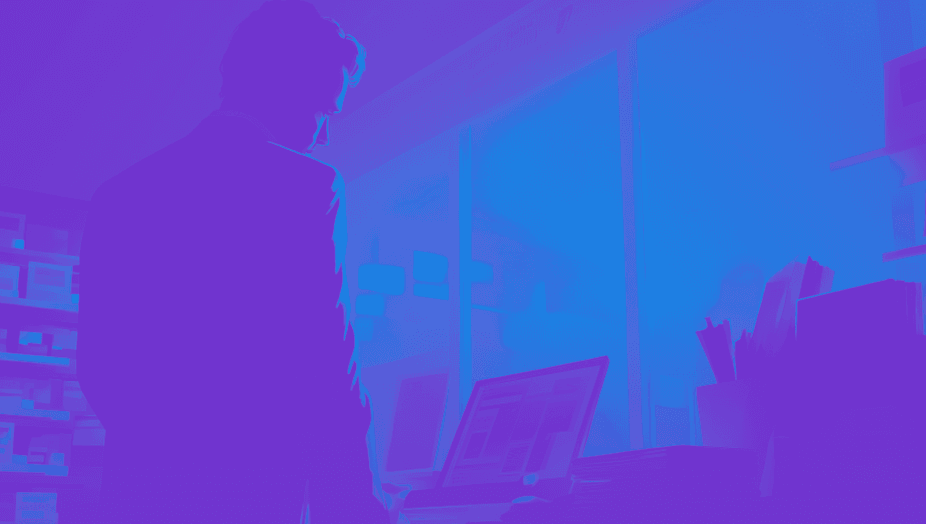
Subscription models and Software-as-a-Service (SaaS) are often used interchangeably, and wrongly so. While there is some overlap between the two – both offer predictable revenue streams and customer loyalty – SaaS businesses are not necessarily subscriptions.
In this article, we examine how SaaS vs subscription models work, how they generate revenue, their benefits and the key differences between the two.
What is a Subscription Business Model?
A subscription business model is when a customers pay recurring weekly, monthly, or yearly payments in exchange for a product. This model dates back to the origins of the publishing industry, where it was used by newspapers and magazines. Today, it's popular for a wide range of services: from streaming services like Netflix to gym memberships and software subscriptions.
How Does a Subscription Model Work?
When customers start a subscription, they authenticate a direct debit or another recurring payment method. Revenue comes from subscription contracts for a set period or through auto-renewals. Customers can cancel or renew their subscriptions after a certain time. This model relies on the ongoing relationship your business builds with customers.
Subscription-based models provide a steady, predictable income stream. Customers enjoy the convenience of automatic repurchases at the same price over time. Businesses benefit by retaining customers for future sales instead of frequently re-engaging them. This results in secure monthly recurring revenue for businesses.
Benefits of a Subscription Model
- Predictable Recurring Revenue: Ensures a steady income flow, making revenue more predictable and simplifying expense planning. Investors usually value the steady stream of income from subscriptions.
- Easy Entry Points: Spreads large purchases over time, reducing the commitment for consumers. Immediate access with low entry barriers, often enhanced with free trials or discounts.
- Enhanced Marketing Opportunities: Allows consistent customer engagement through email campaigns and newsletters. Provides valuable usage data for targeted marketing and builds trust for easier upselling.
- Scalability for Growth: Offers flexibility to scale products and services as the business grows. Easy to adjust pricing tiers and service levels to meet client needs.
Subscription Business Model Examples
At its most basic form, subscription business uses the flat rate, where customers pay a fixed fee for regular access to a product or service.
Yet as the subscription subscription models, especially in e-commerce, are gaining rapid momentum - TBRC's report projected the global subscription e-commerce market to reach $904.2bn by 2026 - the structure of these businesses evolves as well. Let’s take a look at some of the examples in more detail.

Netflix: Tiered Pricing
A great example of a subscription-based business is streaming services like Netflix. Netflix uses tiered pricing with options such as basic, basic with ads, standard, and premium. Pricing depends on device usage, HD quality (standard or ultra), and ad preference.
Duolingo: Freemium Model
Duolingo is a language-learning app that operates on a freemium pricing model. The free version provides access to language lessons with ads and limits on daily mistakes. The premium version, Super Duolingo, removes ads, allows unlimited mistakes, and offers additional features. Most users opt for the free version, but the premium subscribers generate the majority of the revenue.
Adobe Creative Cloud: Bundles & Features
Adobe Creative Cloud offers a flexible subscription model based on features or bundles. Users can subscribe to individual apps like Photoshop, Illustrator, Premiere Pro, and more. Alternatively, they can subscribe to bundles with multiple apps. It's flexible and ideal for users with constantly changing needs.
Amazon: Subscribe & Save
Amazon's Subscribe & Save allows customers to subscribe and receive products regularly to save for the price per item. The longer they commit, the more they save. For example, subscribing to monthly deliveries of household items might start at a certain price, but subscribing for six months or a year reduces the cost per delivery.
What Is a SaaS Business Model?
Software-as-a-Service (SaaS) is a business model where software is not sold outright but leased to customers. SaaS software is typically stored on the cloud, to multiple users, through either a pay-per-use or subscription contract.
How Does a SaaS Model Work?
As mentioned, SaaS companies deliver software online through a browser, hosted either by them or a third party. This means customers skip the hefty IT costs for servers, data centers, and administrative staff. Users get the complete package, not just the software—this includes infrastructure, maintenance, support, and updates.
These services are usually sold as subscriptions, giving users the right to use them for a set period. But not all SaaS businesses follow this model—it's a common misconception. SaaS businesses can also make money on pay-as-you-go basis.
Benefits of a SaaS Model
- Reduced Time to Benefit: SaaS is already installed and configured, so users can get it running in hours. This cuts down on installation time and potential issues.
- Lower Costs: SaaS operates in a shared environment, reducing hardware and software license costs. Small and medium businesses can access software that would otherwise be too expensive.
- Scalability and Integration: SaaS solutions in the cloud are scalable and easily integrate with other SaaS offerings. No need for additional servers or software; just enable what you need.
- New Releases: SaaS providers offer upgrades, making them immediately available to customers. This lowers the cost and effort compared to traditional upgrade methods.
SaaS Examples
As mentioned earlier, there's definitely an overlap between SaaS and subscription-based models since many SaaS businesses offer subscriptions. To better understand the various approaches SaaS companies use, let’s take a look at some SaaS business examples.

Salesforce: Tiered Pricing & Features
Salesforce offers a range of pricing tiers—Essentials, Professional, Enterprise, and Unlimited—that cater to various business needs and budgets. Its pricing is different for different features such as platform, engagement, commerce services, and more.
Zoom: Freemium & Tiered
Zoom’s freemium model attracts users with its free plan. It includes basic meeting features such as hosting up to 100 participants and a 40-minute time limit on group meetings. Paid plans Pro, Business, Business Plus and Enterprise, offer extra features, such as longer meeting durations, recording transcripts, dedicated customer support, and more.
Slack: User-Based Pricing & Freemium & Tiered
Slack also offers a freemium version, too, yet its tiered pricing for the paid version is a user-based model, also referred to as seat-based. This is based on how many people in the team can access the software. They charge only for active seats which means that only those users who use the software “count” towards the used seat licenses.
Amazon Web Services (AWS): Pay-as-You-Go
AWS charges based on actual usage of its cloud computing resources. Users pay for what they consume within a given period. This means that their bill every month will go up or down, depending on their usage.
Difference between Subscription and SaaS
The key difference is that subscriptions can apply to a variety of products and services, while SaaS specifically refers to leasing software that is cloud-based and accessed online. While SaaS can use a subscription model, it can also be pay-as-you-go.
| Subscription | SaaS | |
| Definition | Recurring fee for regular access to or purchase of a product or service | Leasing cloud-based software accessed online |
| Examples | Netflix, gym memberships, Amazon Subscribe & Save | Salesforce, Zoom, AWS |
| Revenue model | Recurring payments (weekly, monthly, annually) | Recurring payments or pay-as-you-go |
| Offering | Can apply to various products and services, physical or online | Specifically offers software |
Elevate Payments with Noda
Noda is a global open banking provider that assists online merchants with end-user KYC, payment processing, LTV forecasting and UX optimisation. We partner with 2,000 banks across 28 countries, spanning over 30,000 bank branches. Noda supports a wide range of currencies for globally-minded clients. We offer scalable plans to fuel your business growth and e-commerce plugins for easy integration.
With Noda's advanced Open Banking API, online businesses can easily integrate direct bank payments, offering their customers a seamless and secure payment experience with lower fees. Whether you're looking to enhance customer verification processes, optimise payment systems, forecast long-term value, or refine the user experience, Noda is your partner in growth.
FAQs
Is SaaS a good business model?
Yes, SaaS is a good business model. It offers predictable revenue and scalability, making it attractive for both providers and customers.
How does SaaS relate to subscription fees?
The SaaS business model can use subscription fees to generate revenue. Customers pay recurring fees for access to the software, which includes maintenance, updates, and support. Yet SaaS businesses can also use the pay-as-you-go model.
Latest from Noda

GoCardless Review 2025: What Merchants Need to Know

Alternative Payment Methods UK: Your Complete Guide to Modern Payment Solutions

Plaid Review for Merchants: Data, Payments, Pros & Cons, and More

